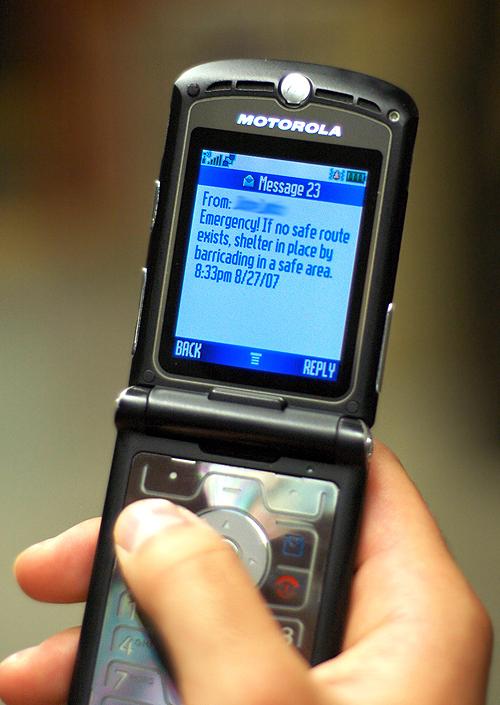Text system in works for emergency notifications
Aug 28, 2007
Last updated on May 12, 2016 at 03:03 p.m.
After the tragedy at Virginia Tech last spring, questions arose on campus about how students at the University would be contacted if a similar disaster were to occur. Tentatively starting this week, the new emergency notification system will begin testing.
The University has been more than two steps ahead: This emergency notification system has been in the works for over five years.
In Sept. 2006, the University started the bidding process for a company to provide a massive emergency notification system. Not until after 9/11, did the type of required technology become an affordable option, said Campus Risk Manager Mark Briggs.
“The system will be capable of delivering messages via text, e-mail, phone,” Briggs said. “We knew the potential always exists for a mass disaster.”
Get The Daily Illini in your inbox!
Similar systems are already used around the world, and were used during Hurricane Katrina and the London bombings last year, he added.
“Probably the single biggest hurdle we have is convincing students to give us the contact information,” Briggs said. The system will contain the same information as the current University directory. However, for students to receive these alerts via text message they must go to uiemergency.edu and provide a text message number. The site will not be accessible until after the testing phase.
If students do not provide a text message number, they will automatically be sent an e-mail. Text messaging is the first priority because it has been shown as the fastest and most efficient mode of contacting due to its small data size.
Briggs assures that this system will only be used in cases of dire emergency, and students would not receive “spam” through this notification system. For example, students would not be notified of a tornado warning. But, if a tornado was about to streak down the Quad, students would receive immediate notification to get inside and seek cover.
The company providing this system, Mutare Software, has local roots. The founders are graduates of the University and decided to donate all of the software portion of the system.
Rich Quattrocchi, a Mutare Software sales representative, said their software was chosen because of its high customization and ease of use.
Their system is used in a California school of 300 students to call in substitute teachers on a daily basis. The system is also used by the U.S. Senate.
The system was designed to be easy enough for our U.S. senators to use in times of national crisis, Quattrocchi said.
Senators should not have to fumble through three-ring binders just to use the system, he added.
Right now, the only people with access to these text messages, or “broadcasts,” are Chancellor Richard Herman and his designee, and the police chief and her designee. Quattrocchi explained that persons in charge of broadcasts can carry simple wallet cards with every step necessary to enable the notification system.
The system can be accessed through any Web browser, and the person sending a broadcast logs on with the same user name and password he or she uses for most University logins.
From there a message is chosen, which are in the planning stages.
The goal is to have specific forms planned out for each type of message (whether for a tornado or school shooting) so that they do not have to be formatted when it is actually time to send, Briggs said.
One of the problems is that most cell phones only accept messages that are 160 characters or less, meaning most messages will have to be sent in multiple short messages.
Briggs assures that this type of system is in no way new or experimental. This is a “tried and true” system and he doesn’t expect there to be any problems during the testing phase.
“This is not a 100 percent solution,” Briggs said. “This is one part of a broad based plan.”






